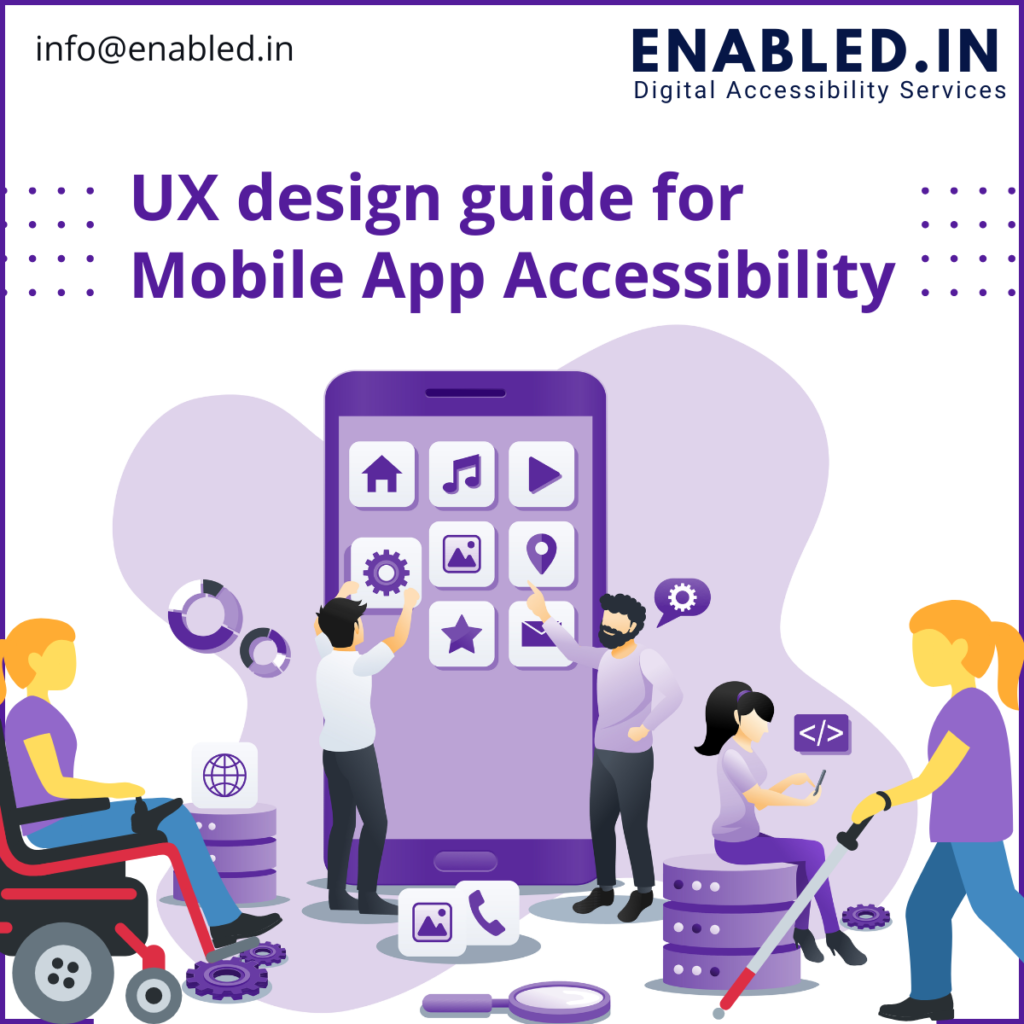Designing mobile applications for smartphones, tablets, and wearables that are user-friendly for the 1 billion+ people who have disabilities, elder people and temporary disable people globally is referred to as “mobile app accessibility.”

Accessibility and UX on mobile devices are very significant and vital. Even small accessibility design elements can have a significant influence on your business; for example, adding captions to your videos can boost engagement.
Consider these 4 impairments when designing your mobile application.
- Cognitive Impairments – Impairments that make it difficult for a person to remember, learn, or concentrate ( Dyslexia or ADD and Alzheimer’s )
- Visual Impairments – A decrease in the ability to see that is not correctable by normal means. ( low vision, color blindness and Total blindness )
- Auditory Impairments – The Partial or complete loss of a persons’s ability to hear (Age-induced hearing loss, Ear trauma or deafness)
- Mobility Impairments – An impaired range of motion requiring alternative methods of physical activities.
Mobile App UX Design
The Web Content Accessibility Guidelines (WCAG ) are a great resources for figuring out how to make your app as accessible as possible.
Here are some particular UX design advice drawn from those principles:
- To Ensure Mobile App content is perceivable in multiple ways – A blue hyperlink may not be visible to colorblind people, but an underlined link will be.
- To Keep Mobile App Layouts consistent across screens – The buttons should be constantly positioned in the same area so that the mobile app is simpler to operate.
- To Opimize the Mobile App Color Contrast – Those with low vision will find it easier to distinguish what they are reading or looking at as a result.
- Use Labels to Optimize for Screen Reader – Make it simple for those who use screen readers to understand what is displayed on the screen.
- Focus states should be used in your design – Focus states make it easier for screen readers users who are blind to see what has been selected by highlighting it.
- offer a 200 % zoom in option – To make things simpler to read, provide users the option to zoom in on text, buttons, or visuals directly in the app.
- Provide access to all audio and video content – Make sure the audio can be easily altered and that there are always transcriptions or captions available.
- Simplicity & Good Design – Simplicity of navigation, quick start and reaction, solid and predictable UC
- Impression – Priority should be given to the product’s and its user interface’s clarity, whether it be through contrast, font size, or appropriate, strategically placed labelling of buttons, tables, and modal elements.
- Touch targets – Android recommends a minimum of 48x48dp, Apple a minimum of 44x44pts, and Microsoft a minimum of 26x26px. To make sure your users don’t accidentally press the wrong button, touch targets should also be sufficiently separated;
- Conduct usability testing – Make sure to have real people test it too…
How Enabled.in helps Mobile Apps Accessibility
Enabled.in Accessibility services handles all kinds of compliance issues for you. From back-end to front-end, ensuring full ADA and WCAG compliance is our standard.
With Enabled.in accessibility testing framework, website owners can effortlessly reach compliance with WCAG 2.1, ADA, ATAG 2.0, EN 301-549 and Section 508 regulations, as required by any governmental and regulatory bodies.
We are committed to involving people with disabilities in the accessibility testing process. As a result, we can offer future-proof Mobile App accessibility solutions.
Contat info@enabled.in